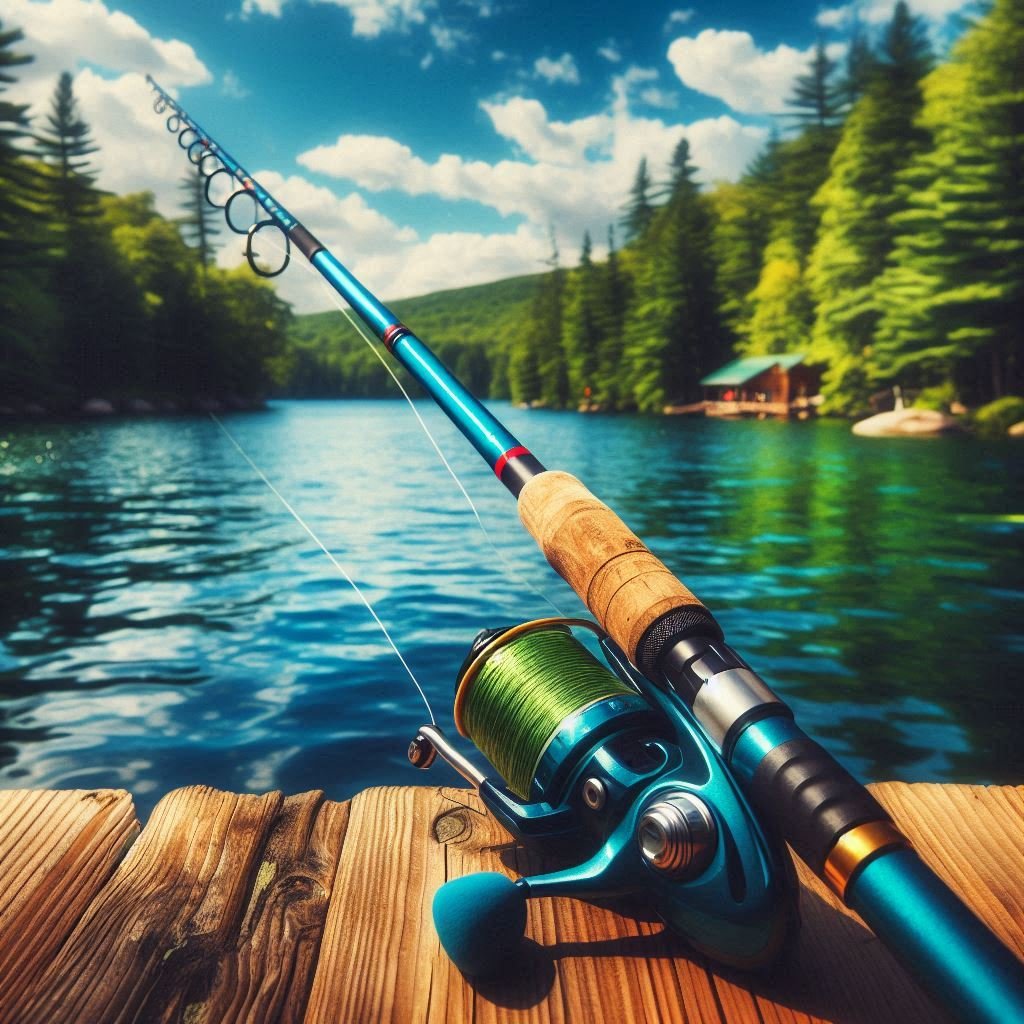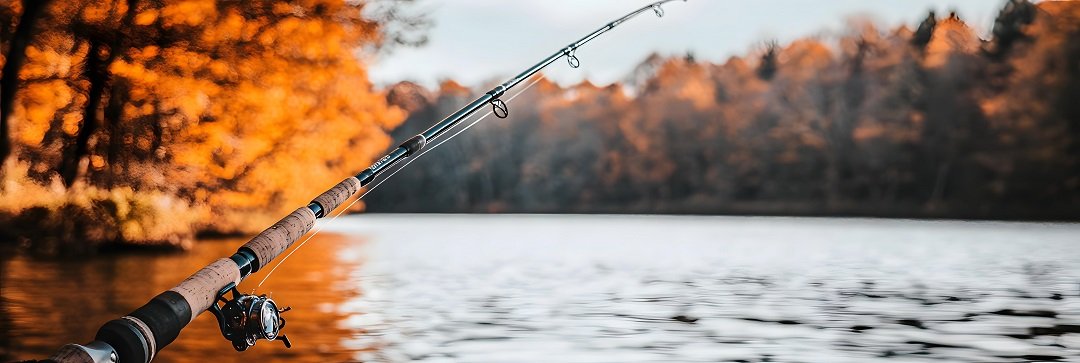Fishing rods are one of the most essential tools for any angler. Whether you’re an experienced fisherman or just starting, understanding the different components of a fishing rod can greatly enhance your overall fishing experience. One of the critical aspects of fishing rods is the gear ratio, a vital factor when choosing the right fishing rod for your specific needs. In this blog post, we will dive deep into the fishing rode gear ratio, explain its importance, and explore various aspects of fishing rods, including types, materials, maintenance, and more.
What is a Fishing Rode Gear Ratio?

At its core, the gear ratio of a fishing rod refers to the number of times the spool (or reel) rotates with each turn of the handle. The gear ratio is a key indicator of how quickly the line is retrieved when you reel in the fishing rod. The ratio is expressed as a number, typically something like 5:1:1, 6:4:1, or even 7:3:1, where the first number indicates how many times the spool turns for each full rotation of the handle. For example, with a 5:1:1 gear ratio, the spool will rotate five times per handle turn.
Understanding the Importance of Gear Ratio in Fishing Rods
The gear ratio determines how fast or slow the line is retrieved. This is an important factor when selecting a rod for specific fishing techniques or target species. A faster gear ratio means a quicker retrieval, which is ideal for certain types of fishing, such as when you need to reel in fast-moving fish or when you’re casting for distance. Conversely, a slower gear ratio is useful when targeting bigger fish or when you need more power to retrieve heavy baits or lures.
The gear ratio also plays a role in casting distance and accuracy. Understanding how it impacts performance helps anglers make better decisions on which rod to use for various fishing styles, from spinning to casting to trolling.
Types of Fishing Rods and How Gear Ratio Relates to Them

Fishing rods come in various designs, each suited for specific types of fishing. Understanding the types of rods and how gear ratios fit into these designs can guide you in selecting the right equipment for your fishing needs.
Spinning Rods
Spinning rods are one of the most common types of rods used in both freshwater and saltwater fishing. These rods are generally paired with spinning reels, and they are ideal for a variety of species. A typical spinning rod often has a gear ratio between 4:1:1 and 6:4:1, allowing for smooth retrieves and great versatility for different fishing conditions.
Casting Rods
Casting rods, used with baitcasting reels, are favored by anglers who prefer a bit more control over their casts. The gear ratio on casting rods can vary widely, ranging from 5:1:1 to 8:1:1, depending on whether you need a faster or slower retrieve. A higher gear ratio allows for faster reeling in of your catch, whereas a lower ratio offers more torque to battle larger fish.
Fly Rods
Fly fishing rods are designed for casting lightweight flies with precision. Fly rods often feature a different setup compared to traditional fishing rods, but the gear ratio still matters. Most fly rods come with a single-action reel, which doesn’t have the same gear ratios as spinning or baitcasting reels. However, for fly rods, the gear ratio is still important when it comes to the retrieve speed of the line after casting.
Trolling Rods
Trolling rods are designed for trolling behind a moving boat, and they are equipped with reels that can handle the large, powerful fish that anglers target while trolling. These rods generally have a lower gear ratio, often around 3:1:1 or 4:1:1, which helps maintain steady tension on the line during the trolling process.
Ice Fishing Rods
Ice fishing rods are built for fishing in frozen water and are usually shorter and more compact than standard rods. Since the action is more subtle, the gear ratio for these rods is typically slower, providing a more controlled retrieval for smaller fish species.
Surf Rods
Surf fishing rods are specifically made for casting from the shore. They are typically longer to reach distant targets in the surf. A higher gear ratio is useful here as it allows for quicker retrieves over long distances and faster reaction times when a fish strikes.
Telescopic Rods
Telescopic rods are compact, extendable rods that are perfect for anglers on the go. The gear ratio for these rods can vary, but generally, they are on the lower end of the spectrum to provide smooth, steady action.
Travel Rods
Travel rods are designed for portability and often have adjustable lengths. These rods are frequently paired with spinning reels and can have a variety of gear ratios depending on the fishing application. Since travel rods are more versatile and compact, the gear ratio typically falls between 4:1:1 to 6:4:1.
Components of a Fishing Rod

A fishing rod’s overall performance is determined by several components, and understanding these parts can help you choose the best fishing rod for your needs.
Rod Blank
The rod blank is the foundation of any fishing rod. It’s the main shaft that determines the rod’s strength, action, and flexibility. Whether it’s made of fiberglass, graphite, or a composite material, the rod blank directly influences how the rod feels during use.
Handle/Grip
The grip is where you hold the rod, and it’s crucial for comfort and control. Handles are typically made of cork, EVA foam, or other materials that provide a non-slip surface.
Reel Seat
The reel seat is where the reel is attached to the rod. It needs to be secure and durable, often made of aluminum, graphite, or stainless steel.
Guides (Eyelets)
The guides are the rings through which the fishing line travels. The material of the guides (e.g., stainless steel or ceramic) and their placement affect casting distance, sensitivity, and durability.
Tip and Butt Cap
The tip is the very end of the rod and is vital for sensitivity. The butt cap provides balance to the rod and is where you place pressure when fighting a fish.
Materials Used in Fishing Rods
Fishing rods come in several materials, each offering unique advantages. Understanding the material helps determine the rod’s performance.
Fiberglass
Fiberglass rods are tough, durable, and typically less expensive. They are a popular choice for beginners and are excellent for heavy-duty fishing.
Graphite (Carbon Fiber)
Graphite rods are lighter, more sensitive, and have greater strength-to-weight ratios. These rods are preferred by professional anglers who need precision and sensitivity.
Composite
Composite rods are a mix of fiberglass and graphite, combining the best of both worlds. They provide flexibility and durability, offering great versatility.
Bamboo
Bamboo rods are traditional, beautiful, and often used by fly fishing enthusiasts. Though they are not as popular as modern materials, they still have a special place in the hearts of dedicated anglers.
Choosing the Right Gear Ratio for Your Fishing Style
When selecting the ideal fishing rode gear ratio, you need to match it to the type of fishing you intend to do. For example, a fast gear ratio (around 7:1:1) is ideal for retrieving lures quickly in freshwater, while a slower ratio is better suited for deep-sea fishing or big game fish. Additionally, rods designed for Terraria fishing or best fishing rod in Terraria can use similar principles, where higher gear ratios can help you catch items more efficiently.
Fishing Rod Maintenance and Care
To ensure your rod remains in good condition, regular maintenance is key. After every fishing trip, clean the guides to avoid line damage and check the reel seat for wear. Store your fishing rod properly and avoid letting it sit in direct sunlight for extended periods.
Why Gear Ratio Matters for Your Fishing Success
Understanding the fishing rode gear ratio is crucial for selecting the best rod for your fishing adventures. Whether you are fishing in a serene pond or out in the open sea, the right gear ratio can make all the difference in performance, power, and accuracy. Don’t forget that other factors, such as the material of your rod, the length, and the components, also play a significant role in your overall fishing experience. By understanding these elements, you can fine-tune your setup for better fishing outcomes.
Fishing Rode Gear Ratio: Latest News, Trends, and FAQs

Fishing rode gear ratio remains one of the most important elements in choosing the right equipment for your fishing endeavors. Whether you’re looking for the best fishing rod in Terraria or need a fishing rod for deeper waters, understanding how gear ratios impact performance is vital. In this section, we’ll explore the latest news about fishing rods, recent events related to fishing rode gear ratios, and answer frequently asked questions to help guide your next fishing adventure.
Recent News and Events in the World of Fishing Rode Gear Ratios
Over the past few years, the fishing rod industry has witnessed significant advancements in gear technology. These innovations are aimed at improving fishing efficiency, increasing rod durability, and offering anglers more customization. For example, Shimano, one of the most popular fishing rod brands, recently released a series of advanced baitcasting rods with high-speed gear ratios. This allows anglers to reel in their catch with more power and speed, improving performance even in challenging fishing conditions.
Another trend that has gained traction recently is the shift towards lighter, more sensitive rods for fly fishing. With graphite and composite materials becoming the norm, anglers now have access to rods that offer both strength and flexibility. These advancements are especially noticeable in fishing rode gear ratios, with many companies now offering gear ratios up to 8:1:1 for even faster line retrieval.
Fishing events around the world have also shed light on the importance of choosing the right gear ratio. In the 2023 Bassmaster Classic, for example, several anglers discussed how a higher gear ratio rod helped them reel in bass faster and with more control during their competition. This event sparked a larger conversation about the importance of selecting the right gear ratio depending on the fishing style and species.
Frequently Asked Questions About Fishing Rode Gear Ratios
What is a fishing rode gear ratio?
A fishing rode gear ratio refers to the number of times the spool rotates in relation to one complete turn of the handle. For example, a 6:1:1 gear ratio means the spool rotates six times for every one turn of the handle. The higher the ratio, the faster the line is retrieved.
Why does the gear ratio matter in fishing?
The gear ratio impacts how quickly or slowly the line is retrieved, which is essential depending on the fishing technique and species you’re targeting. Faster gear ratios are ideal for casting lures, while slower ratios work well when you need more torque for larger fish.
How do I know which gear ratio is right for me?
Choosing the right gear ratio depends on the fishing style and species. For example, fast gear ratios (6:1:1 or higher) are ideal for casting and retrieving lures quickly, while slower ratios (3:1:1 or 4:1:1) are better suited for trolling or big game fish that require more power.
What gear ratio is best for freshwater fishing?
For freshwater fishing, the ideal gear ratio typically falls between 5:1:1 and 6:1:1. These ratios offer a good balance of speed and torque, making them versatile for a wide range of techniques, including bass fishing and casting lures.
How does the gear ratio impact the power of a fishing rod?
The gear ratio directly affects how much power you can apply during the retrieve. A higher gear ratio is better for speed and quick line retrieval, while a lower gear ratio provides more torque, which is useful when fighting larger fish or heavy bait.
Is a higher gear ratio always better?
Not necessarily. While higher gear ratios (e.g., 7:1:1 or 8:1:1) are ideal for fast-paced fishing like casting or retrieving lures, they may not be the best for larger fish or situations where you need more torque. A slower ratio (e.g., 4:1:1) provides more control and power, especially for deep-sea fishing or when targeting heavy species.
What is the best gear ratio for saltwater fishing?
For saltwater fishing, many anglers prefer medium to fast gear ratios like 5:1:1 to 6:1:1. These provide enough power for battling larger fish and the ability to retrieve quickly when needed.
How does the gear ratio affect the speed of fishing?
The gear ratio determines how quickly the fishing line is retrieved. Faster ratios, such as 6:1:1 or higher, allow for quicker reeling in of the line, which is useful for certain fishing techniques, such as casting lures or reeling in fast-moving fish.
Can the fishing rode gear ratio affect the casting distance?
Yes, the gear ratio can influence how far you can cast. While the rod length and line type are more important for casting distance, a higher gear ratio can help in retrieving the line faster, reducing the time spent between casts and improving your overall fishing efficiency.
Does the gear ratio matter for fishing rods in Terraria?
In Terraria, the best fishing rods often come with different gear ratios that impact how quickly you can reel in fish or items. Higher gear ratios in Terraria fishing rods enable you to catch more items faster, which is particularly useful for farming or gathering specific resources in the game.
How often should I change my fishing rod’s gear ratio?
Unlike parts of a reel or rod that may wear out over time, the gear ratio is fixed and does not need to be changed unless you’re replacing the reel itself. However, if you notice that your gear ratio isn’t working well for your specific fishing style or if you’re experiencing issues with dragging or slipping, it might be worth considering a different gear ratio reel.
Are custom fishing rods with unique gear ratios worth it?
Custom rods, including those with unique gear ratios, can be worth the investment if you are a specialized angler who needs specific gear for techniques like fly fishing or big game fishing. Custom rods offer tailored features that can enhance performance, including perfect balance, rod sensitivity, and appropriate gear ratios for optimal fishing.
Trends and Innovations in Fishing Rode Gear Ratios
Fishing gear ratios have evolved significantly in recent years, especially as technology has improved. Brands like Shimano, Abu Garcia, and Daiwa have introduced cutting-edge features in their rods and reels, such as anti-twist guides, digital gears, and faster retrieval systems.
A key trend in the fishing rod industry is the increasing popularity of high-speed gear ratios (e.g., 8:1:1 and 9:1:1), which are used by anglers targeting species such as tarpon, marlin, and tuna. These faster ratios help anglers reel in large fish quickly, minimizing the time the fish has to escape or fight back. These innovations are not just limited to professional tournaments—recreational anglers are also benefiting from faster gear ratios to enhance their experience.
Another noteworthy trend is the rise of multi-purpose rods. These rods are designed with versatile gear ratios to accommodate a wide range of fishing techniques, such as fly fishing and trolling. This versatility makes them an attractive option for anglers who want a single rod that can handle various fishing conditions.
Let’s Share Your Thoughts!
Now that you’re equipped with the knowledge about fishing rode gear ratios, we’d love to hear your thoughts and experiences! Do you prefer a faster gear ratio or a slower one? How has the gear ratio impacted your fishing experience? Drop a comment below and share your insights.
If you found this post helpful, don’t forget to share it on social media to help fellow anglers improve their gear choices. Let’s keep the conversation going! Let’s Check out Everything You Need to Know About the Oregon Fishing License
We want to know: How do you choose your fishing rode gear ratio? Have you ever had a fishing trip where the gear ratio made all the difference? Share your story or ask any questions you may have in the comments below. Happy fishing!
